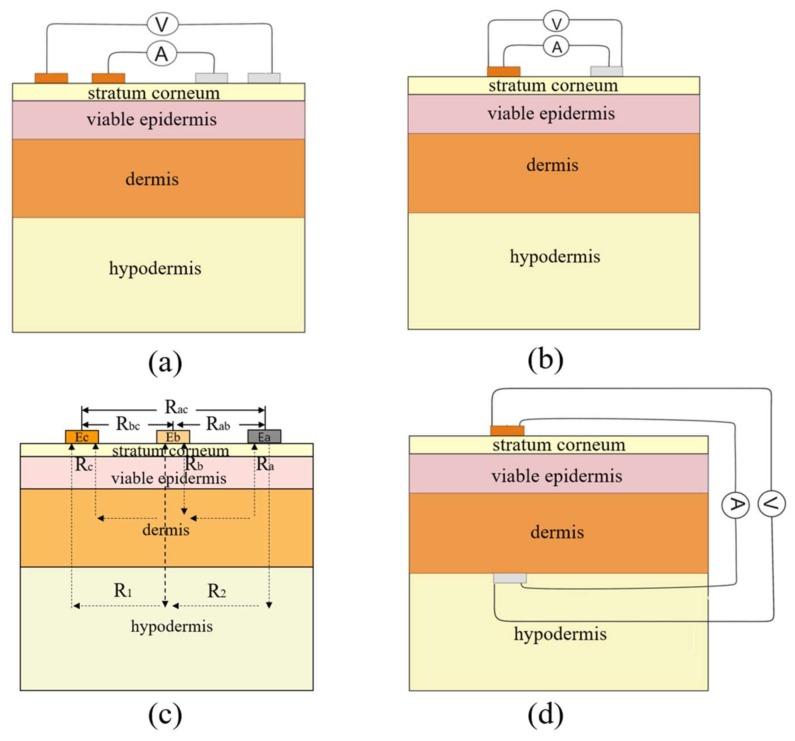Figure 6.
Four different measurement layouts of electrodes: (a) shows the layout of the four-electrode method, the inner two electrodes are response signal detection electrodes and the outmost two electrodes are stimulus signal electrodes; (b) represents the layout of the two-electrode method, the detection electrodes and the stimulus electrodes are multiplexing; (c) represents the layout of the three-electrode method, the skin is regarded as pure resistance [62]; (d) represents the layout of the tip-electrode method, the most direct and accurate way to detect skin impedance, but it is invasive.

